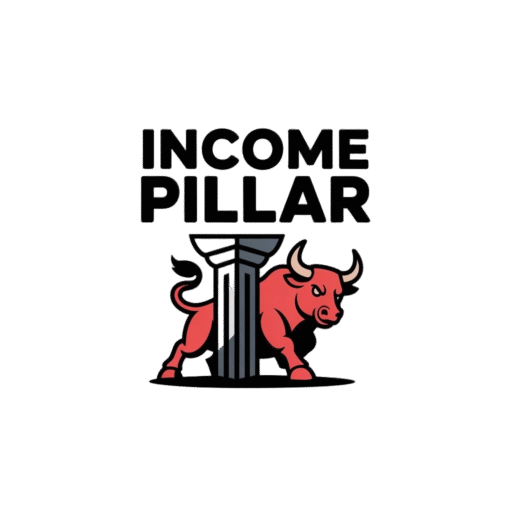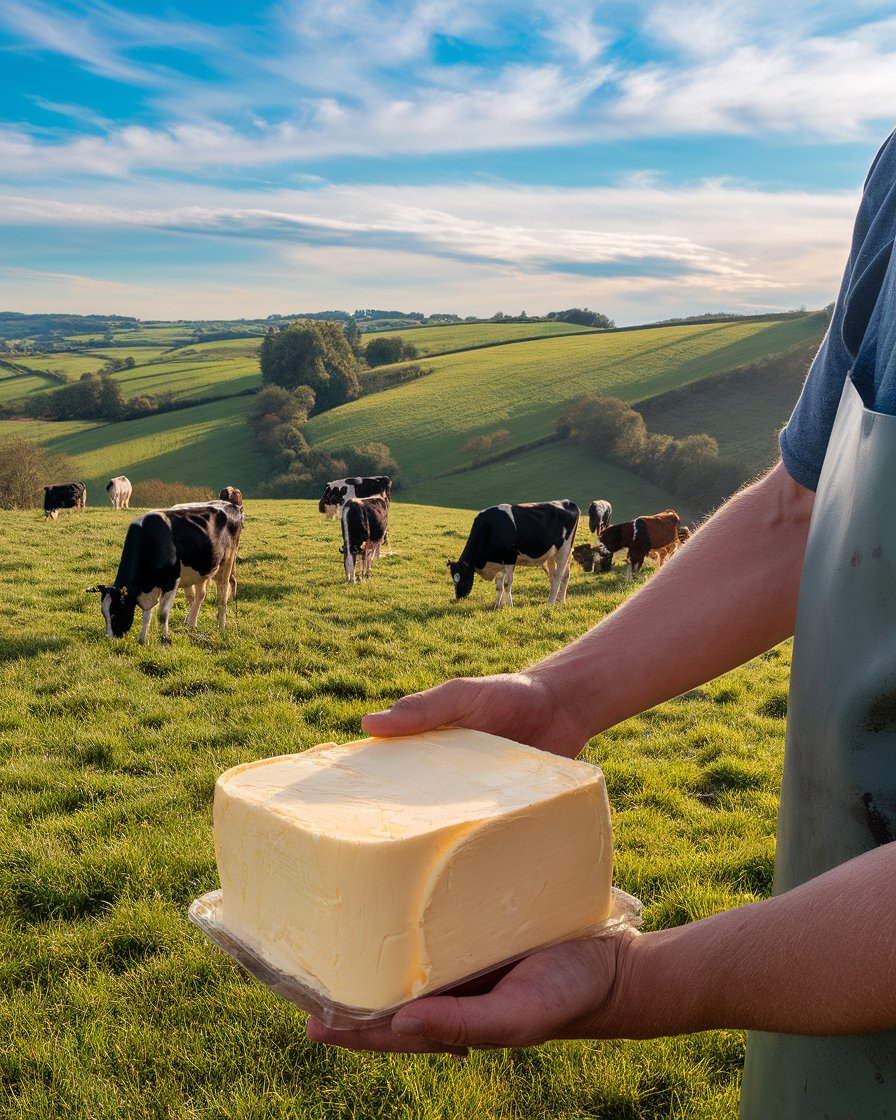Introduction
When it comes to choosing butter, the debate between European and American varieties has gained attention among bakers and home cooks alike. One of the biggest differences lies in the butterfat content, with European butter generally containing at least 82% butterfat, while American butter typically contains 80%. This variation impacts texture, flavor, and even how butter looks, especially in baking. European butter is often considered better for baking because of its richness, giving pastries like croissants and biscuits a flakier texture. In contrast, American butter is more common in everyday cooking, but emerging brands are raising their standards to meet higher butterfat percentages.
Aside from fat content, factors like how the butter is churned and whether it’s salted or made with sweet cream also influence its flavor. European butter tends to have a slightly different, richer flavor, often attributed to grass-fed cows. The differences between European and American butter don’t stop at taste; they can also affect the final results in baking and cooking.
Key Takeaways
-
The primary difference between American and European butter is the butterfat content, with European varieties containing at least 82% compared to America’s 80%, affecting flavor and texture.
-
European butter is often richer and creamier, making it ideal for baking tasks such as puff pastries and croissants, while American butter is more commonly used in everyday cooking.
-
Regulations for butter production differ, with European standards allowing less water and more butterfat, contributing to its premium quality and higher price.
-
Cultured butter, common in Europe, undergoes a fermentation process that enhances its tangy flavor and creamy texture, making it a favorite for both cooking and baking.
-
American butter producers are increasingly offering higher butterfat options, providing affordable alternatives that closely match the quality of European butter.
-
Professional bakers often prefer butter with higher fat content, as it provides superior moisture and richness in baked goods like cakes, cookies, and pastries.
Contrasting American and European Butter
Butter may seem like a simple ingredient, but when you compare American and European varieties, the differences are striking. The most noticeable contrast is the butterfat content, which plays a crucial role in texture, flavor, and even price. American butter is typically produced with 80% butterfat, while European butter contains at least 82% and sometimes even higher, up to 90%. This difference might sound small, but it can make a significant impact on how the butter performs in cooking and baking. European-style butter tends to be richer, creamier, and more suited for tasks like making puff pastry or croissants. Whether you’re spreading it on toast or working it into dough, butter from across the pond can offer a distinct taste and texture that many bakers prefer.
Key Differences Between European and American Butter
When comparing European and American butter, several important factors distinguish them. Here’s a breakdown of these critical differences:
1. Butterfat Content
European butter typically contains at least 82% butterfat, while American butter is usually made with 80% butterfat. This seemingly small difference in fat content affects the richness, flavor, and texture of the butter. Higher butterfat leads to a creamier consistency, which is why European butter is preferred for certain types of baking, such as puff pastries and croissants.
2. Water Content
One of the notable contrasts is the water content. European butter contains less water compared to its American counterpart. This lower water content allows European butter to perform better in baking, as it creates a flakier texture in pastries. American butter, with slightly higher water content, may not deliver the same results when used in recipes requiring precision in fat content.
3. Production Regulations
The regulations governing butter production also contribute to the differences in quality. The USDA mandates that American butter must contain a minimum of 80% butterfat, while European butter production must meet stricter standards with a minimum of 82% butterfat and in some cases, as high as 90%. These standards ensure a higher quality product in European markets, contributing to its premium price and flavor profile.
4. Flavor Profile
European butter is often made from cultured cream, which allows it to develop a tangy, rich flavor. In contrast, American butter is usually made from sweet cream, resulting in a milder taste. This cultured cream process in Europe adds a complexity to the butter that many chefs prefer for both cooking and spreading on bread.
5. Churning Process
European butter tends to be churned longer, which results in a denser texture compared to American butter. This extended churning process incorporates more fat and removes more water, enhancing both the flavor and the consistency of the butter, especially for uses like making doughs and pastries.
6. Baking Performance
Due to the higher butterfat percentage and lower water content, European butter is often the choice for baking, particularly when recipes require precision. The additional fat helps to create flakier pastries and richer textures in baked goods. American butter, on the other hand, is generally more affordable and widely available, making it a suitable option for everyday cooking and less demanding baking tasks.
Variances in Butter Regulations
The regulations governing butter production in the U.S. and Europe are a key factor in the quality of butter each region produces. In the United States, the USDA mandates that butter must contain at least 80% butterfat, but European standards require a minimum of 82% butterfat, and in some cases, as much as 90%. This difference is why many European butters, like Kerrygold and Danish varieties, are often richer and denser than their American counterparts. European butters may also contain less water, making them ideal for creating flakier croissants or pie crusts. These standards not only affect the butter’s taste but also its price, with European butter often being considered a premium product.
Impact of Butterfat Percentage
The butterfat percentage is more than just a number—it’s a critical factor in how butter behaves in both cooking and baking. With a higher fat content, European butter tends to have a smoother texture and a more pronounced flavor, which makes it perfect for baking applications like puff pastries or croissant dough. The additional butterfat results in better steam release during baking, which leads to flakier and lighter textures in pastries. Additionally, the richness of European butter makes it a favorite for simple uses like spreading on toast or incorporating into compound butters. The higher fat percentage also tends to make European butter slightly softer and more spreadable, enhancing its appeal in various culinary uses.
Quality Factors of European Butter
European butter is widely recognized for its superior quality, and this distinction stems from several key factors. One of the primary aspects is its higher butterfat content—typically at least 82%, compared to the 80% found in American butter. This extra butterfat creates a richer, creamier texture and more pronounced flavor, which is especially noticeable when used in baking or spreading on fresh bread. European butter is often made from milk produced by grass-fed cows, further enhancing its flavor profile and nutritional value. Additionally, European butter tends to be churned longer, giving it a denser consistency. These factors, combined with traditional production methods and region-specific characteristics, make European butter a preferred choice among chefs and culinary enthusiasts.
Case Study: The Impact of PDO Certification on French Butter
In a study examining the economic and cultural effects of the Protected Designation of Origin (PDO) on French dairy products, Normandy’s beurre d’Isigny butter was highlighted as a key example. The PDO label ensures that products, including butter, are made from milk sourced within specific regions and crafted using traditional methods. The study found that PDO-certified butter products had significantly higher consumer trust due to the guaranteed quality and authenticity. Beurre d’Isigny, for instance, is made from milk produced by grass-fed cows, which influences the butter’s richer flavor and creamier texture. The long-established traditional churning process further enhances the product’s consistency and appeal in baking. This certification not only helps maintain the high standards of butter production but also protects local artisanal methods, keeping small producers competitive in a globalized market. The success of PDO-certified French butter illustrates how quality labels can influence consumer choices and protect heritage.
PDO Label for French Butter
A major factor contributing to the quality of European butter is the Protected Designation of Origin (PDO) label, especially prominent in French butter. This label ensures that the butter is crafted using traditional methods and from milk that originates from a specific region in France. Butters like Normandy’s beurre d’Isigny are prime examples of PDO-certified products that carry a unique flavor, directly influenced by the region’s terroir. The PDO label is a guarantee of authenticity and quality, meaning consumers can trust that they’re buying a product that reflects local customs, as well as rich, time-honored techniques. This labeling system helps protect both the quality and heritage of European butter-making traditions, which can be lost in large-scale, industrialized production.
Cultured Butter Enhancements
Another feature that sets European butter apart is the use of cultured cream in its production. Cultured butter is made by fermenting cream with beneficial bacteria, a process that imparts a tangy, complex flavor not found in regular butter. This fermentation process enhances not only the butter’s taste but also its texture, resulting in a creamier, richer product that’s perfect for baking or cooking. Cultured butter’s unique flavor profile is one reason it’s favored by pastry chefs for making flakier croissants and puff pastries. This type of butter is also a favorite among home cooks who prefer a more robust, sophisticated flavor for simple spreads or when enriching sauces and soups.
Shifts in American-Made Butter
In recent years, there has been a noticeable shift in how American-made butter is produced and appreciated. Traditionally, American butter was often made with 80% butterfat, but consumers’ tastes are evolving, and many are seeking richer, more flavorful options similar to European-style butter. This demand has driven innovation within the industry, encouraging American producers to focus on higher butterfat content and better-quality ingredients. As a result, the market now offers more premium butters, some with butterfat levels closer to the 82% found in European varieties. These changes reflect a growing interest in elevating American-made butter, making it more competitive and desirable for culinary enthusiasts who appreciate richer textures and flavors.
Emerging Brands with Higher Butterfat
Many emerging American butter brands are now taking steps to increase their butterfat content, meeting the growing demand for premium quality. These brands focus on producing butter that competes with European-style varieties, often achieving butterfat percentages closer to 82%. By using traditional churning methods and sourcing quality dairy, brands like Plugra and Vermont Creamery have gained popularity among chefs and home cooks alike. These higher butterfat products offer a creamier texture and richer taste, making them ideal for baking and cooking, where butter quality can significantly influence the final product. As consumers become more discerning, the presence of such premium butter brands marks a positive shift in the American dairy industry.
Cost-Effective Alternatives
While many consumers are drawn to the luxurious quality of European butter, American producers are responding by offering more cost-effective alternatives with higher butterfat content. Brands like Organic Valley and local creamery options have begun producing unsalted butter with butterfat levels closer to the 82% mark, providing a richer taste without the hefty price tag often associated with imports like Kerrygold butter. This shift is helping to make premium butter accessible to a wider audience, allowing home cooks and bakers to enjoy superior quality at a more affordable price. These alternatives not only elevate everyday meals but also contribute to a growing appreciation for high-quality butter in American kitchens.
“The food you eat can be either the safest and most powerful form of medicine or the slowest form of poison.” – Ann Wigmore
Professional Perspective on Butter Choices
Professional bakers understand that the butter they choose can make or break a recipe. Whether making flaky croissants or moist cakes, butter plays a pivotal role in achieving the desired texture and flavor. Many bakers lean toward butters with higher fat content, as these provide more moisture and richer results in baked goods. While European butter is often a favorite due to its distinct richness and higher butterfat content, American butter brands are catching up by offering competitive options. Knowing which type of butter to use, based on fat content and flavor, allows professionals to craft desserts and pastries that stand out in both taste and quality.
Preferred Butter Brands for Baking
In the world of professional baking, certain butter brands rise above the rest due to their quality and consistency. European brands like Plugrá and Kerrygold are commonly recommended for their higher butterfat content, which hovers around 82%. This extra fat lends itself well to pastries, giving them that coveted flakiness and depth of flavor. Many bakers find that these butters add a richness to cookies and cakes that can’t easily be replicated by lower-fat alternatives. However, as American producers refine their products, bakers are increasingly mixing local options with traditional European favorites. These combinations create innovative results that blend the best of both worlds.
Balancing Flavor and Fat Percentage
The key to selecting the best butter for any baking project lies in balancing flavor with fat percentage. Higher fat content in butter delivers a creamier texture and a more pronounced, luxurious taste. This makes a noticeable difference in recipes like puff pastries, where butterfat helps create the perfect layers. However, in some cases, bakers may opt for butter with a slightly lower fat content if they’re aiming for a lighter or less rich outcome. The choice depends on the type of pastry or dessert being crafted, as well as personal preferences. By adjusting the butter used, professionals can fine-tune their recipes for maximum flavor impact.
Conclusion
In conclusion, the choice between European and American butter can have a significant impact on your cooking and baking. Butter for baking often performs better when it contains a higher percentage of butterfat, and this is where European butter shines, with at least 82% butterfat compared to the normal American 80%. The richer flavor and texture in European butter, allowed to ferment, make it a favorite among bakers, especially when working with pastries and croissants.
However, American butter is evolving. Many producers are now focusing on increasing the butterfat content to create options that are made with added benefits like a richer flavor and smoother texture. Whether you prefer salted butter or unsalted varieties, these choices will depend on the butter results you’re after. Ultimately, the butter vs debate boils down to personal preference and recipe needs, but understanding what’s the difference between them will help you make the best selection.















